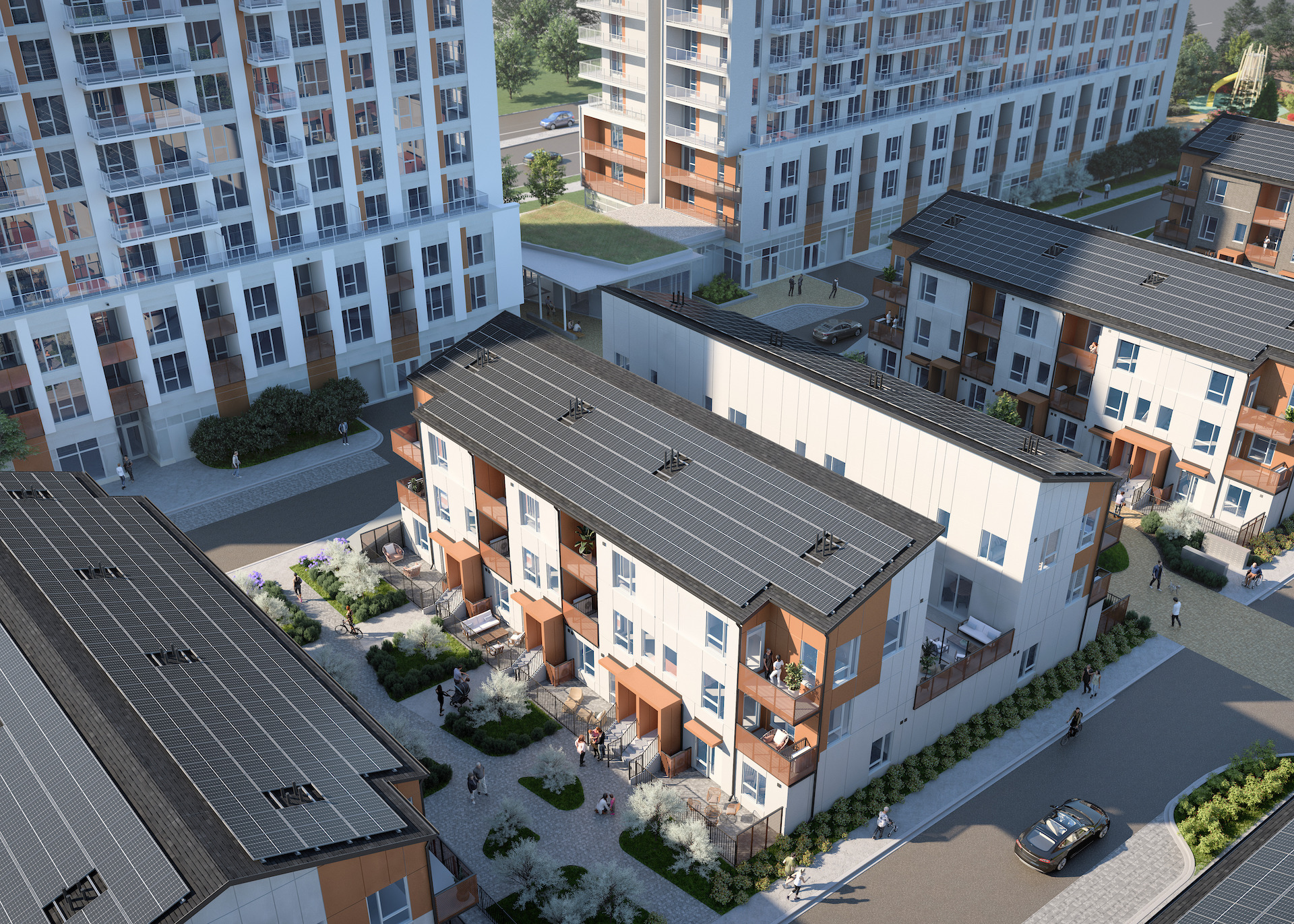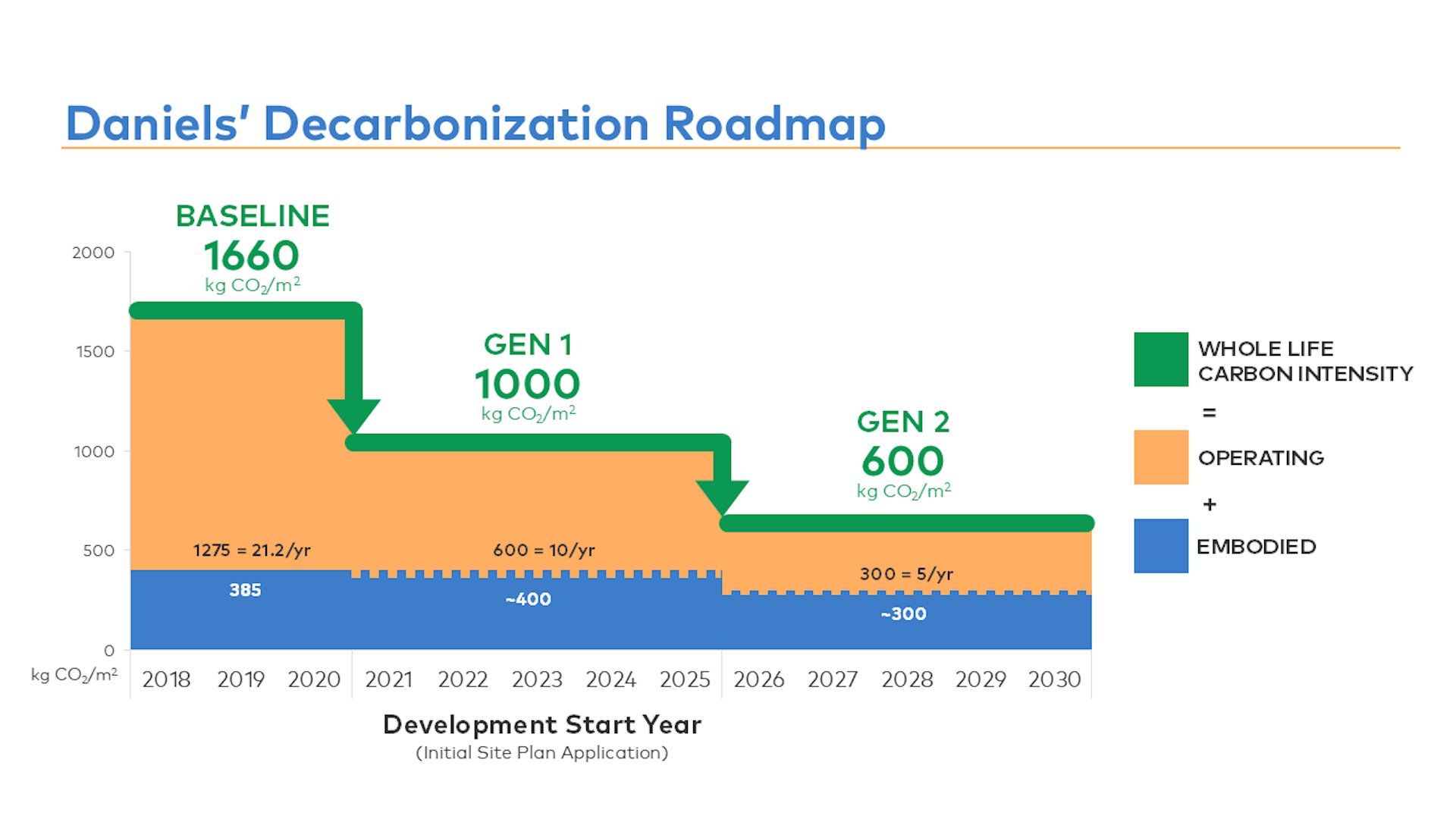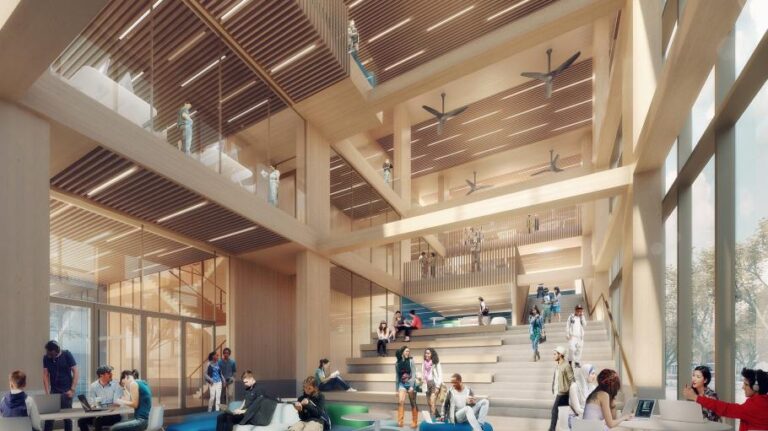Saturday, October 4, 2025
Buildings account for 13 per cent of Canada’s greenhouse gas (GHGs) emissions—one of the biggest contributors to our carbon footprint. To deliver on our nation’s 2050 Net Zero commitment we will have to decarbonize all manner of buildings over the next 25 years.
In addition to the massive inventory of existing homes, offices, warehouses and institutional buildings that will have to be retrofitted, millions of new low-carbon homes are required in the coming decades to serve our growing population. And yet in this moment, a cost-of-living crisis has led to enormous political and economic upheaval all of which threaten the momentum that’s been building towards a low-carbon future. There has been a pullback on climate action on a number of fronts, from the repeal of the carbon tax to the erosion of regulations and mandates south of the border that will have continent wide implications.
But with builders such as The Daniels Corporation (Daniels), the belief is that we must push back against this false choice between sustainability and affordability. It is our conviction that by focusing on producing value aligned low-carbon homes, we can deliver on our climate ambitions, without exacerbating the affordability challenges we face.
In 2023, we released our Decarbonization Roadmap, outlining our strategy to achieve near-zero whole-life carbon emissions in our developments by 2030. Our goal is to lead by example, by showing that sustainability targets can be ambitious, achievable and replicable. By sharing our approach openly, we hope to contribute to a more transparent conversation around sustainability and make decarbonization more tangible, practical and accessible across the industry. The guiding principle of our Roadmap is to deliver the best possible carbon performance, without asking people to pay more to purchase, maintain or rent their home.
The Decarbonization Roadmap launched with a plan for the next two phases of our development pipeline. Generation 1 applies to communities starting the development process in 2021 to 2025 and sets a whole-life carbon intensity target of 1,000 kg CO₂ per square meter (kg CO₂/m²)—a 40 per cent reduction from our baseline of 1,660 kg CO₂/m². Whole-life carbon includes the embodied emissions from constructing the project, along with 60 years of operations. Our Generation 2 target applies to all new communities starting development in 2026 and aims to reduce this further to 600 kg CO₂/m², achieving a 64 per cent reduction, representing a transformational change within the industry.
Tracking Progress: The Decarbonization Roadmap in Action
Our first-generation communities are demonstrating real progress towards our long-term goals and so far, we have avoided 24,660 tonnes of carbon emissions relative to our baseline.
Implementation of our emissions reduction strategy is well underway at our first low-carbon development, MPV2, which is already under construction and will be Brampton’s largest low-carbon master-planned community. At MPV2, we combined the highest performing features of our past projects to set a new performance standard moving forward. The project features mid-rise condominiums with geoexchange heating and cooling along with net-zero fossil-fuel free townhomes with all electric heating, cooling and hot water systems and community scale rooftop solar. Heating carbon emissions will be reduced by over 90 per cent through improved building envelopes and electrified heating systems that drastically reduce fossil fuel consumption.
We’ve also introduced carbon labels in four of our communities—Daniels on Parliament, The Kith Condominiums, MPV2, and Uniti—so homeowners and tenants can see exactly how their buildings are performing on emissions. But transparency is just one piece of the puzzle. The real impact comes from embedding low-carbon strategies into how we design and build homes in the first place.
Real-World Solutions: How Low-Carbon Strategies Are Shaping Our Communities
The key tactic we’ve relied on to reach our Generation 1 targets is to electrify the production of space heating in our projects, through the use of technologies such as geothermal energy and air source heat pumps. In Ontario, where we build, we’re fortunate to have a relatively clean electricity grid, with most of our power coming from emissions free hydroelectric and nuclear generation. Electrified space heating can be delivered cost competitively today, and results in a massive reduction in emissions as compared to traditional natural gas burning boilers and furnaces. We’re designing electrified space heating into all our new communities, along with improved building envelopes that incorporate increased insulation, right-sized glazing ratios and better air tightness. Altogether, these approaches improve the energy efficiency of the homes, while delivering more comfortable interior spaces.
As we look forward to Generation 2 communities that will start design next year, we’ve identified two key areas of focus. The first will be to electrify the provision of hot water. We’ll be taking the lessons learned from the electrification of space heating and carefully calibrating them to ensure we deliver low-carbon hot water in an efficient and economically viable manner. The second area of focus is materials, with the aim of reducing the embodied emissions associated with construction. This is the next frontier within the development industry and our strategy will be to improve our material use efficiency at the same time as we audit our supply chain and change to lower emissions intensity products wherever possible. The lowest emitting material is the one you don’t use, and we are committed to simplifying and streamlining our designs to shave every ounce of material that we can. This will not only reduce emissions but also save on costs, which can be reallocated towards lower emitting materials or other improvements to the buildings.
The Cost of Inaction
In developing our strategy, we felt strongly that our approach needed to be grounded in delivering low-carbon housing that costs the same or less than equivalent market housing. There is a persistent misconception that building sustainably is expensive and therefore, impractical. The upfront costs of sustainable design, such as better insulation, electrified heating systems and energy-efficient appliances, are modest compared to its long-term financial and environmental benefits. Ultimately, the real expense isn’t in the materials or technology—it’s in delaying action.
Failing to incorporate low-carbon strategies today doesn’t just pass the problem to future generations—it locks them into rising energy costs, expensive retrofits and the environmental toll that results from outdated building practices. The choices we make now will shape the communities where a new generation of Canadians will live, work and raise families. We can deliver low-carbon housing that is attainable and resilient. The alternative is we leave behind homes that don’t deliver the same quality of living and will require costly fixes down the road.
The Work Begins Now
At Daniels, we believe in doing the right thing. To us, we believe in offering innovative solutions that offer lasting value for homeowners, tenants and the environment. But cutting carbon emissions cannot be done by a handful of developers alone. Real progress will happen when our entire industry embraces transparency, accountability and a commitment to higher sustainability standards. This isn’t a competition over who can cut emissions the fastest. It’s about every developer, policymaker and industry leader stepping up to make low-carbon building the standard, not the exception.
Canada has a chance to lead the way in sustainable development, setting a new benchmark for how communities can thrive while reducing their carbon footprint. We encourage developers to join us in prioritizing low-carbon developments to further establish themselves as leaders, which matters more than ever in today’s dynamic market conditions. The tools and knowledge are already here—now, it’s about having the collective choice to act.

Written by Adam Molson, Vice President, Sustainability, The Daniels Corporation.
Featured image credits: The Daniels Corporation.














